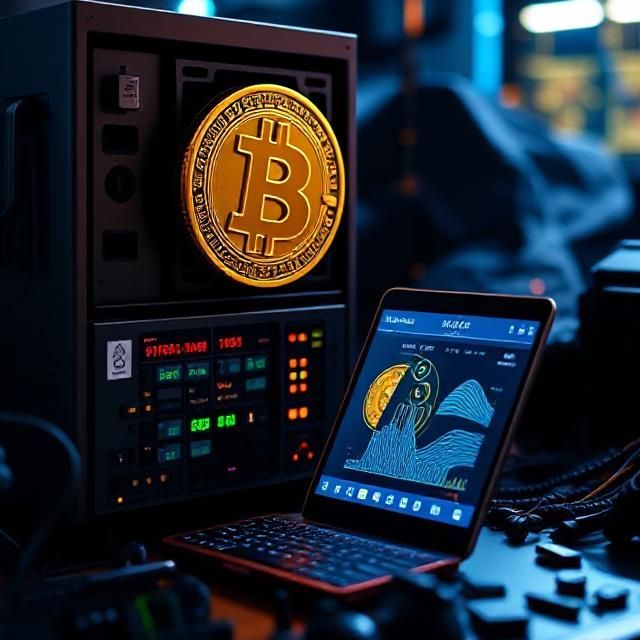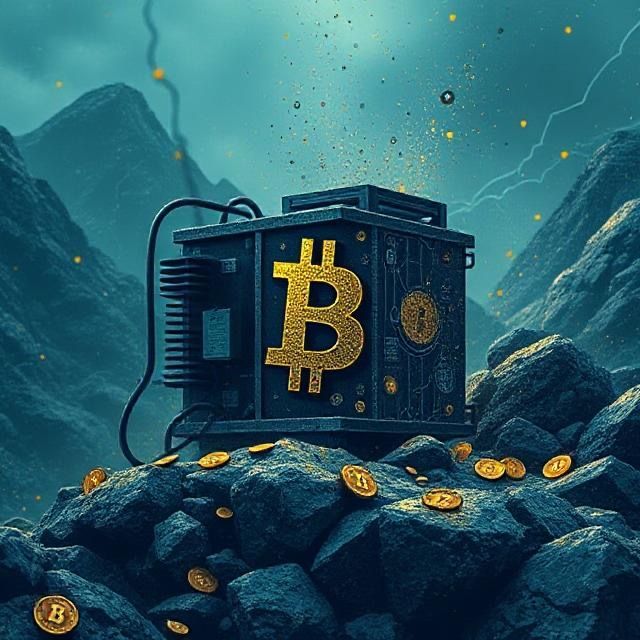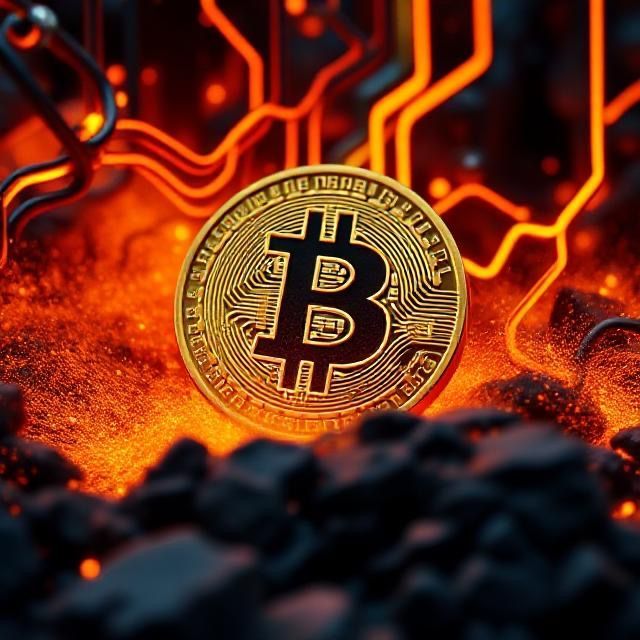The Beginner’s Guide to BitcoinSV (BSV)
BitcoinSV (BSV) is a cryptocurrency that was forked , as a result of a civil war that broke out among some pioneering members of the Bitcoin Cash community. Though the fork was announced earlier in August 2018, it took place on 15 th November, 2018; which brought forth Bitcoin SV (Satoshi Vision) and Bitcoin ABC (Adjustable Block-size Cap). The team behind Bitcoin SV envisions fulfilling the dream of Satoshi Nakamoto by creating a cryptocurrency that can be used as a peer-to-peer payment method, while ruling out any issues of limited scalability, hence its name – Bitcoin Satoshi Vision. In order to accomplish this, some features of the Bitcoin network have to be upgraded to improve its decentralization, security and scalability.
Note: The founders of both projects, Bitcoin Cash (BCH) and Bitcoin Satoshi Vision (BSV), claim to be “the real Bitcoin”. Remember not to fall for it! There’s only one Bitcoin – BTC. Make sure you read our guide to understand which is “ The Real Bitcoin – Avoiding Confusion Surrounding Bitcoin.”
BitcoinSV in a nutshell
- Is a forked cryptocurrency from Bitcoin Cash , which occurred on 15 th November, 2018
- Just like its sister coins, BSV aims to improve the digital payment system with its improved features of the original coin.
- Craig Write and Calvin Ayre are the individuals that orchestrated the fork of BSV.
- The new Bitcoin SV raises the limit of block size from 32MB to 128 MB, to increase the scalability of bitcoin as a currency that can be used in daily transactions.
A brief history of Bitcoin Satoshi Vision
Bitcoin SV was forked out of Bitcoin Cash and this was led by Craig Wright and Calvin Ayre, as they claim to fulfill the real vision of Satoshi Nakamoto. Let’s consider what really led to this hard fork on 15 th November, 2018.
Why the Fork?
To avoid all certainty of doubt, there is the need to explain what forking means in cryptocurrencies. Forking is the act whereby crypto nodes aka miners decide to either build a new blockchain ledger or improve the features of the blockchain network. There are two types of fork namely: Hard Fork and Soft Fork. Hard fork comes about when some miners decide to create a new distributed ledger (DLT). On the other hand, soft fork is simply updating the blockchain network to improve upon its features without creating a new distributed ledger.
The argument of what size a block reward should be brought about disagreements that divided the BitcoinCash community into two. Craig Wright and Calvin Ayre proposed a software called Bitcoin Satoshi Version which would limit the block size to 128MB whiles Roger Ver and Jihan Wu, of Bitmain Mining company, promoted the use of a software called Bitcoin ABC (Bitcoin Adjustable Blocksize Cap) which would cap the blocksize at 32MB. Craig & Calvin succeeded in convincing other miners within the BitcoinCash Community in creating Bitcoin Satoshi Vision (BSV).
How does Bitcoin Satoshi Vision work?
Just as its mother coins, Bitcoin and Bitcoin Cash, BSV was developed purposely as a digital payment system to be used in daily transactions in peer-to-peer network. BSV operates under a decentralized network without any control from any Central Authority; hence, all transactions are stored in its distributed ledger. This ledger is built based on the Proof-of-Work consensus protocol therefore making it impossible to attack the network without redoing all the blocks already built. On the average, BSV network speed is almost twice that of Bitcoin and Bitcoin Cash and this makes it scalable, at least for now, as compared to its parent coins.
BSV has the same total supply as Bitcoin Cash, at 21M, but per the time of publication only 18.2M have been mined into circulation. The block reward for miners supporting BSV network is 12.5 BSV.
The reason why Bitcoin SV claims to be the real bitcoin.
Global adoption of Bitcoin as a currency has not been a reality due to the slow rate at which transactions are confirmed. On the average, bitcoin is able to confirm 7 transactions per second, which makes it not suitable as a currency, for now. Some crypto enthusiasts prefer to call bitcoin as an asset for storing value more than a currency.
The initial block size limit of Bitcoin when launched was 1MB, but this was later increased to 4 MB during the bull run year of bitcoin in 2017. However, as the year went by, some developers within the bitcoin community thought that in order to make bitcoin a globally used cryptocurrency, it has to be scalable enough to accommodate all the huge number of transactions that will be broadcast to the network. This gave birth to Bitcoin Cash, which sought and increased the block size limit to 32MB and this was later argued by Craig Wright and Calvin Ayre as not suitable enough to ensure full scalability of the network. Bitcoin SV sought forth with a soft version, which further increased the block limit size to 128MB, making it suitable to increase the number of transactions across the network. By increasing the block limit size, Bitcoin SV claims to be fulfilling the vision of Satoshi creating a digital currency for peer-to-peer transaction.
How to own BSV Coins
The only means of acquiring BSV coins is either you purchase it on Exchange platforms , Over-the-Counter platforms and through mining it.
How to mine Bitcoin Satoshi Vision
Mining cryptocurrencies dates back to the launch of bitcoin where miners contribute to the safety of the network and are rewarded with some number of cryptocurrencies as a compensation for their time, electricity/energy used in running their rigs. Miners set up mining rigs in order to confirm transactions that are broadcast to the network. They do this by solving complex mathematical equation with Application-Specific Integrated Circuits and once a block of transaction is completed, the miner is rewarded with the block reward.
Prior to this, once a miner solves an equation, it broadcasts the information to all other nodes of the network for validation that is to avoid double spending. Once the majority of the miners approves this across the network, the miner then receives the block reward.
How to buy Bitcoin SV
You can either choose to purchase Bitcoin SV from centralized exchanges or over-the-counter platforms. However, once you purchase the coins, you will need to download the BSV wallet and save your funds over there. Another form of saving your funds is by using hardware wallets such as Trezor, Ledger Nano S etc. Some of the exchanges that you can purchase BSV from are Binance, Bittrex, Kucoin, while you can use the services of over-the-counter platforms such as Coinbase, SFOX, and Smart Contract etc.
How much is Bitcoin SV worth?
One of the basic characteristics of cryptocurrencies is their volatile nature. Their prices fluctuate from time to time, based on projects’ growth, partnerships, release of products etc. The issuing price of BSV was $70.5 and it recorded an all-time high of $441.20 on January 14, 2020. It’s all time low price was recorded as $36.87 and this was recorded on 23 rd November, 2018. With current circulation of 18.2M coins, it has a market cap of $4,772,420,990 USD. As the time of writing, BSV value is being traded at $297.76.
The Benefits of using Bitcoin SV
- The feature of proof-of-work makes it impossible for users to double spend; hence offering high level of security for transactions conducted using BSV.
- Fast and Easy payment process because transactions occur on a peer-to-peer over the blockchain network
- Higher Scalability- by increasing its block size to 128MB BSV can accommodate higher number of transactions done in BCHABC and BTC, at least for now.
The Risks of using Bitcoin
The crypto industry through the blockchain technology has a great potential to improve the financial services of this world, but it also faces several security threats that makes it very risky for users who wish to use cryptocurrencies for payments of goods and services or a store of value.
- Volatility – this is the ever-changing price of cryptocurrencies that makes it not suitable to be used as a payment method. Fiat currencies are stable and that is why both buyers and sellers prefer to use them for payments.
- Hacks – the industry has recorded several security breaches into the funds of users and even exchange platforms, which has led to the loss of millions of dollars. Users whose private keys are stolen by hackers lose their funds and cannot retrieve them ever again.
Final Thoughts
Bitcoin Satoshi Vision as led by Craig Wright plans to make Satoshi Nakamoto’s vision of creating a highly scalable cryptocurrency for peer-to-peer transaction void of any central control. Some people prefer to hold cryptocurrencies as store of value, whilst others use it as a medium of exchange. Whichever way you use it, never forget the rule of thumb in the cryptospace “Only put in what you can afford to lose”.
The post The Beginner’s Guide to BitcoinSV (BSV) appeared first on Crypto Adventure.




